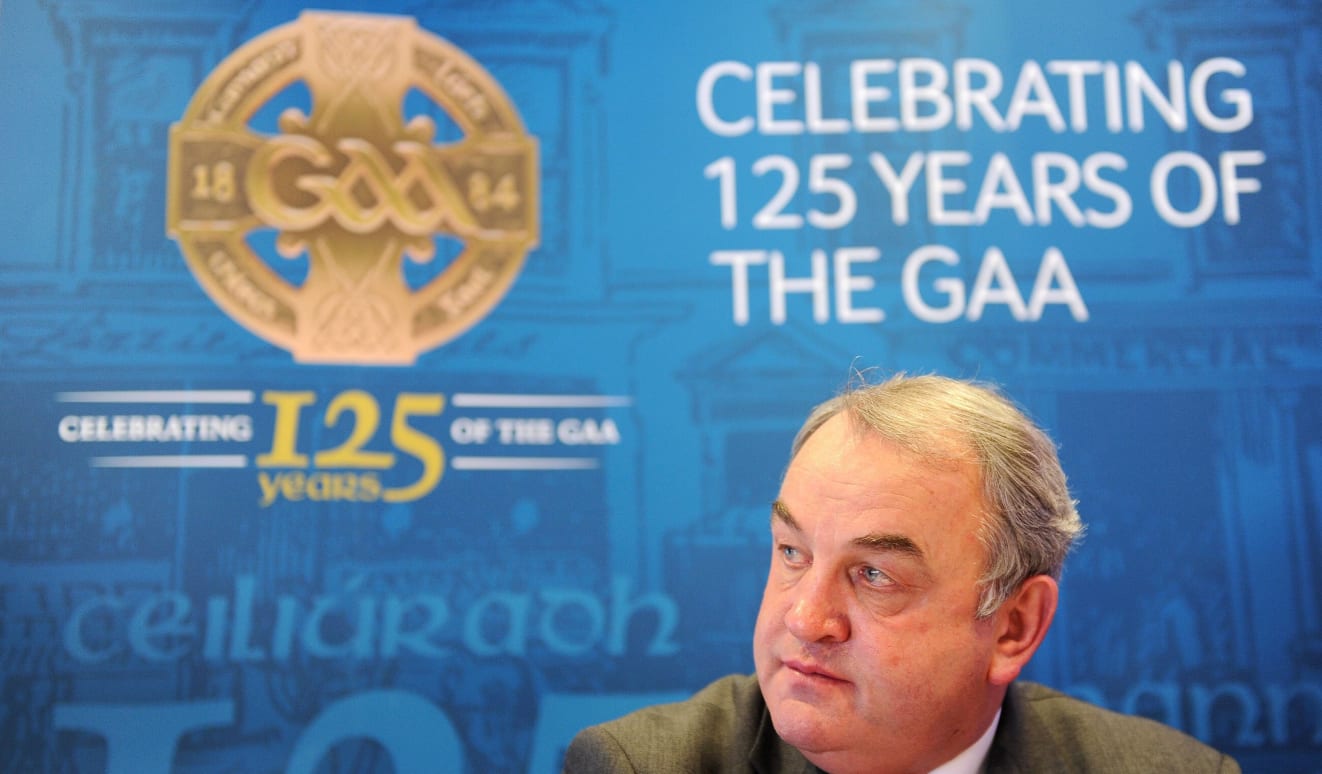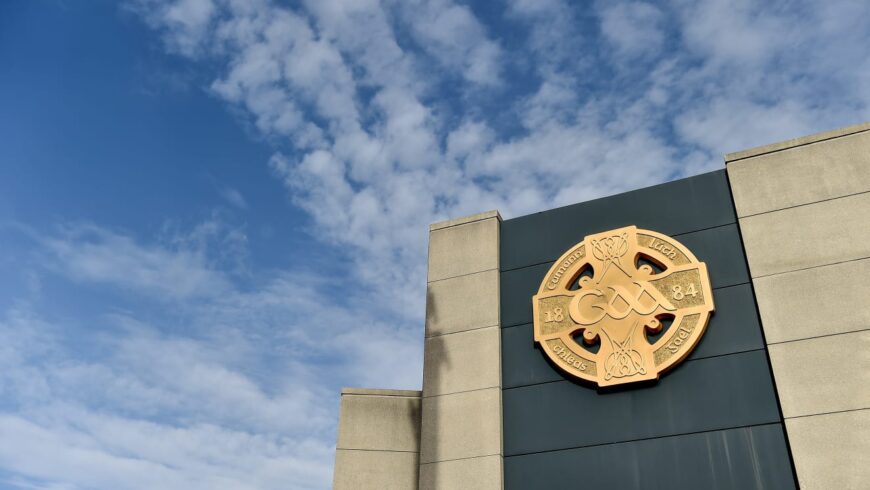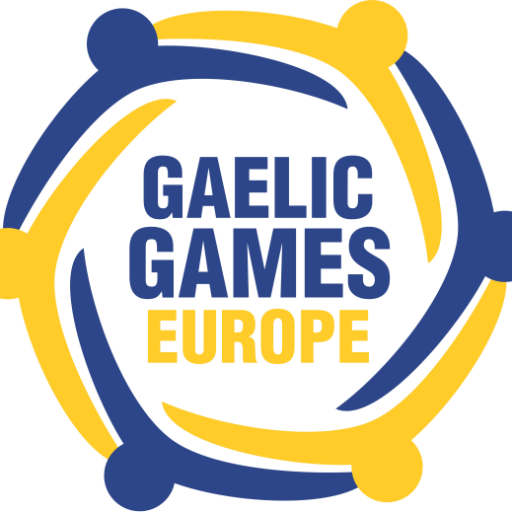There was a sense of the passing of time giving great perspective when the Design and Crafts Council Ireland (DCCI) held an event entitled ‘Back to the Future of the GAA – by Design’ in Croke Park Museum on Tuesday this week.
Part of DCCI’s Design Week, it looked back at how in 2008 the GAA undertook a major rebranding exercise that included developing the GAA logo that, 15 years later, feels like it’s been around for much longer it is so ubiquitous.
Considering the GAA trades so heavily on a sense of identity, it does now seem quite the anomaly that it took until 2008 for the Association to recognise how its own brand could be such an asset.
It was the GAA President of the day, Nickey Brennan, who took the bull by the horns.
Struck by how successfully Glanbia developed their own brand after the merger of his employers Avonmore with Waterford Foods, he saw the need for the GAA to do something similar.
“I knew we were all over the shop in terms of our branding,” says Brennan, who was one of the speakers at Tuesday’s event.
“There were all sorts of logos every time there were new initiatives by the Association, but there wasn’t one recognisable brand where you could see the GAA letters.
“I spoke to Liam Mulvihill (former GAA Director General) and Dermot Power (former GAA Head of marketing) about the need to do this, and, in fairness, they agreed.
“So we gave the contract to the Brand Union and the first thing they did was collect all the different brands that the GAA was using for various projects, letterheads, signage, everything, and that was put in an office that they had in Dublin and it was only when you saw that you could see the enormity of the problem in front of you.
“Around the time I became President we were going to be entering into the multi-sponsor model. And the worry was that I had with three sponsors across each competition now there was a danger that they would become more prominent in branding a competition than the Association and the GAA wouldn’t be seen in it at all.
“So we needed to position the GAA front and centre of everything in terms of the branding. Be it on competitions, signage, or whatever else. The GAA needed to stand out there because we had fallen away. That was at the heart of it and that was at the heart of the final solution.
“It looks like just a physical changing of a brand, but it was a lot more than that in terms of the thinking of where the GAA should fit. And, more importantly, how we were perceived by new sponsors that we were bringing on board be it Vodafone, Ethihad, AIB, and all the others.
“That’s why it was important to present the GAA as a strong brand. And also to fit in against other big brands around in the country here, not just the ones we were dealing with. They could be Coca Cola or other international sports like the AFL or IRFU.
“We were seen as weak because we weren’t proudly displaying our brand on our own content.”

Former GAA President, Nickey Brennan, pictured in 2008 in front of the new GAA Logo.
The digital product consultancy Wondr were also brought on board for the rebrand consultative process which was extensive.
To figure out where they wanted to get to, the GAA had to establish first of all how they were currently viewed by a cross-section of Irish society.
“The project became a lot more than we maybe initially envisaged because there was a huge consultation about the GAA and what people perceived the GAA to be,” says Brennan.
“These were people who were genuine GAA people, lukewarm GAA people, and no interest in the GAA people, and from all parts of the country.
“We wanted to get a full sense of what people felt about the GAA and how that might be reflected in what we came up with in terms of the new brand.”
The feedback from the consultative process gave the Association lots of food for thought, particularly the critique from younger people.
“There was a lot of engagement with the younger generations,” says Brennan. “A lot of young people gave us their opinions on the GAA, and it was clear that we weren’t seen to be ‘cool’.
“And that summed up why it was important to create what we have today in terms of a strong identity, to be that cooler organisation that represents young people, that I believe we have developed.”

Former GAA President, Nickey Brennan, presents Kilkenny captain James ‘Cha’ Fitzpatrick with the Liam MacCarthy Cup after the 2008 All-Ireland SHC Final with the new GAA logo emblazoned above the Hogan Stand tunnel.
The success of Go Games and Cúl Camps and the big increase in coaching and games development initiatives of all types in club and schools means more younger people than ever are playing our games.
Brennan believes we should think about more than just boots on pitches, though. He thinks it might be timely to strengthen the GAA’s brand even further by using new technology to engage hearts and minds in the most inclusive way possible.
“There’s probably a need to revisit that whole area of branding again in the light of the social media world, technology world, that has expanded,” he says.
“The iPhone had just come out when that 2008 brand review was completed, and the impact on the whole world of communications and media has been huge since then, so it might be appropriate for the GAA to revisit that whole area and think about the use of social media more in terms of how we brand the Association going forward.
“There are so many peoples from across the world who now call this country their home, and it’s important we reflect a changing Ireland.
“People who come to live in Ireland might not fully understand the GAA manifesto of ‘Where we all Belong’. How do we get that across to the multitudes of people who make Ireland home and how do we connect with them?”


 .ie
.ie



